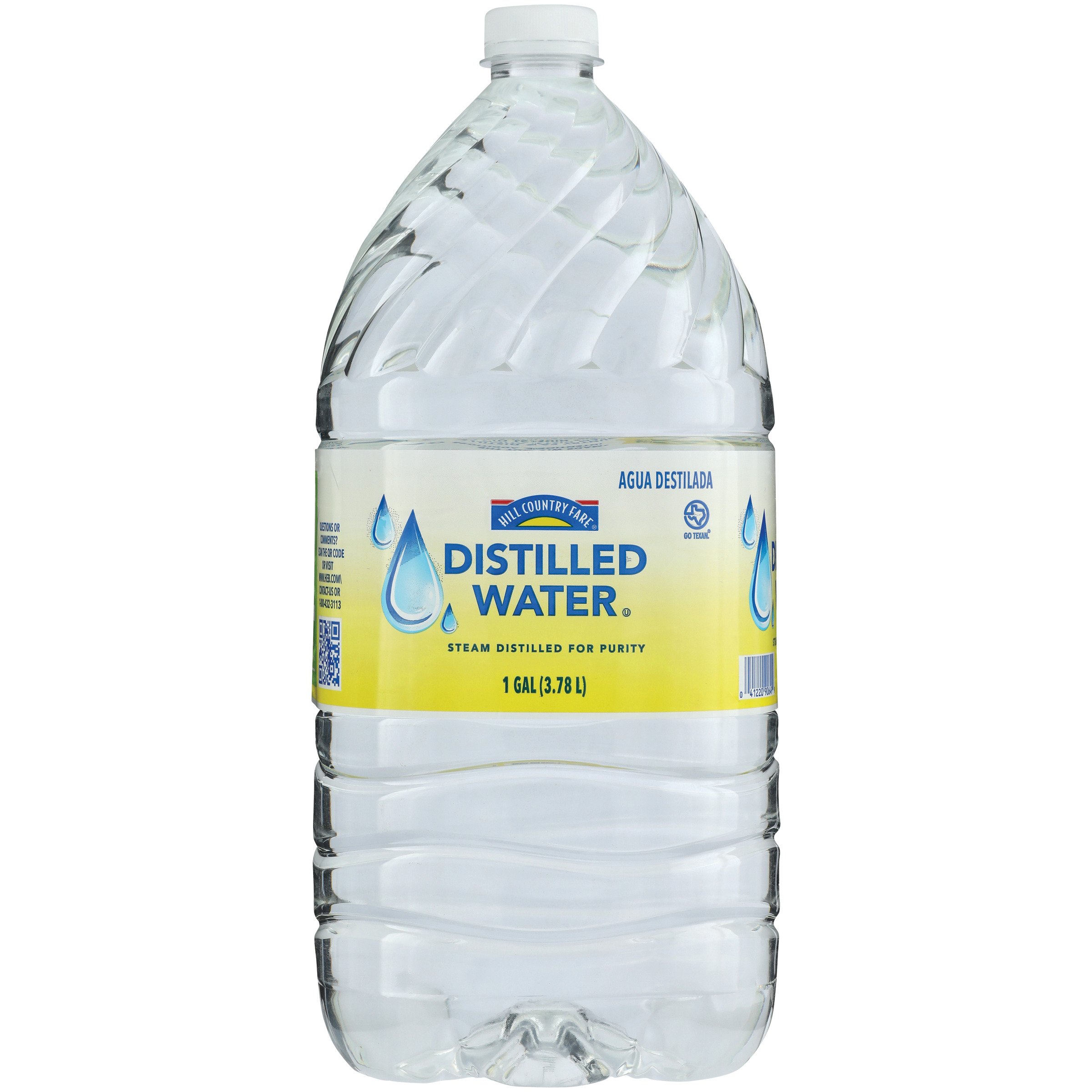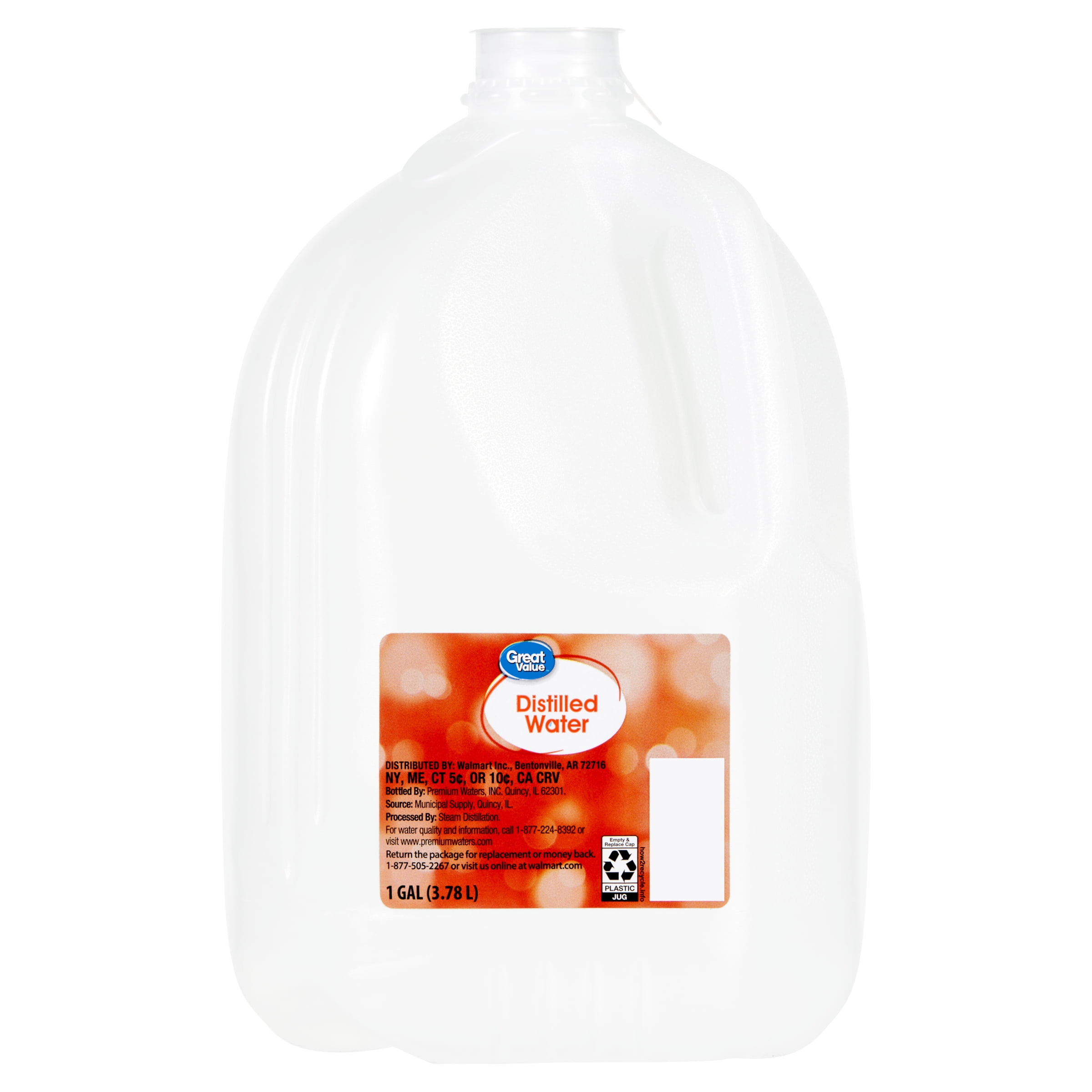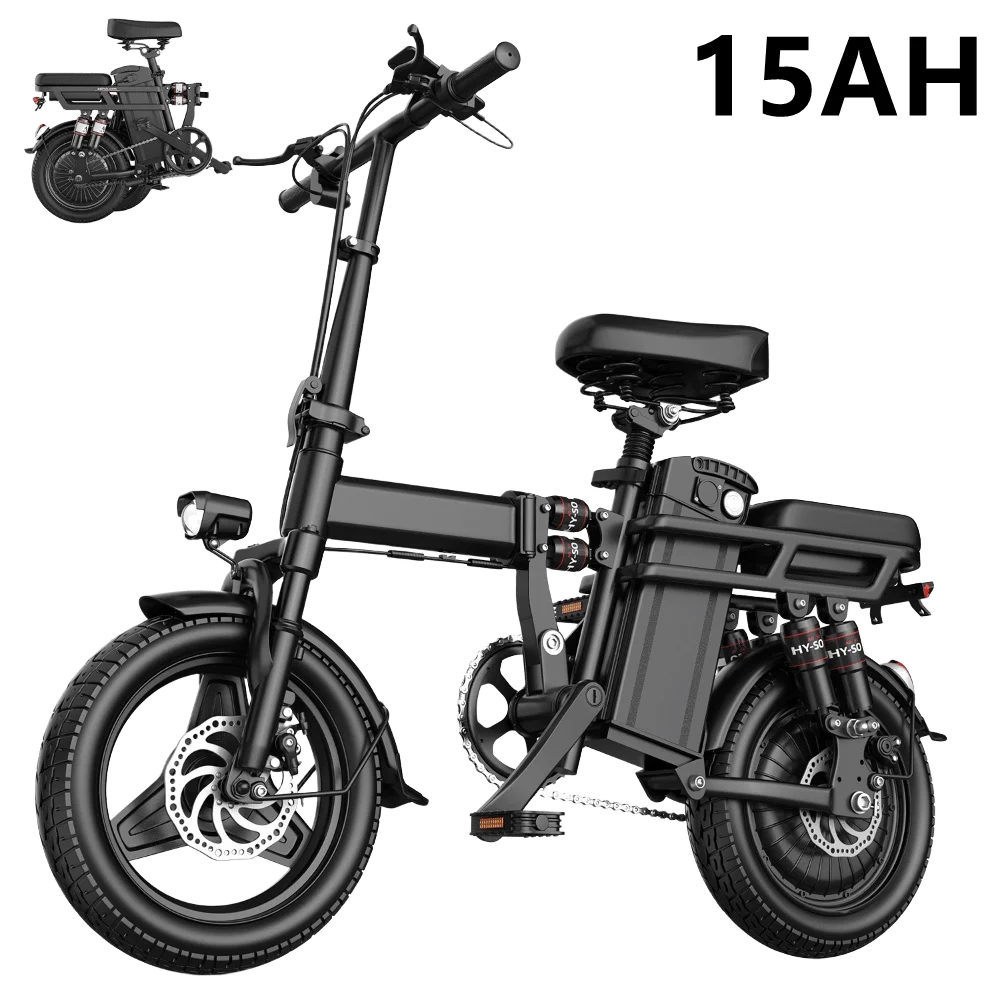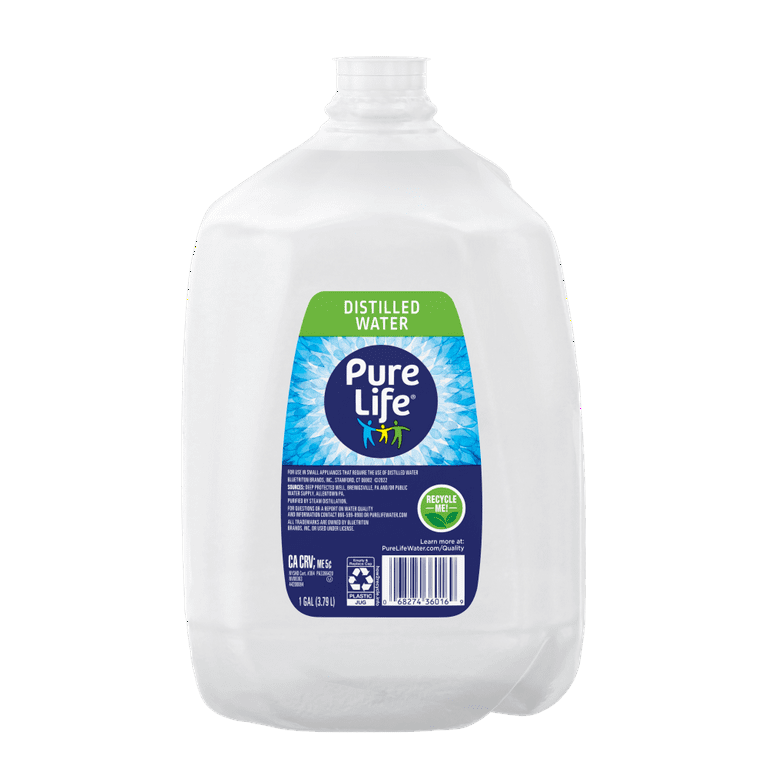The Pure Promise of Distilled Water

Yet, that absence is precisely why some find the taste… blank. Without calcium or magnesium, our tongues miss the familiar mineral “bite,” and a slight tang of acidity can creep in if the water mingles with carbon dioxide in the air. But for many, that trade-off—losing minerals to gain purity—is worthwhile. I’ve chatted with yoga instructors who carry distilled bottles to studio classes and tech enthusiasts who fill their fancy coffee machines with it. Each claims smoother flows, fewer clogs in equipment, and, surprisingly, a subtle boost in skin glow. It’s not magic, just pure, unadulterated H₂O that leaves behind whatever else you don’t want.
Have you ever paused to consider the difference between purity and emptiness? Distilled water balances on that fine line. It’s a clear liquid metaphor, really—sometimes the absence of distraction is exactly what you need. Embracing it means trusting that a stripped-back approach can feel like a luxury. And yes, despite warnings about missing trace minerals, occasional or mixed use hardly empties your body’s reserves. It’s a sleek tool in your wellness kit—one sip at a time.
The Science Behind Distillation
Ever wondered how ordinary tap water transforms into pure, sterile drops? It starts when you bring water to a rolling boil, coaxing only H₂O molecules to escape as steam while heavier minerals and bacteria remain trapped in the chamber [1][2]. Those rising bubbles carry nothing but water vapor—no calcium, no magnesium, no nasties. Next, the vapor hits a cooled condenser, often a coiled metal tube, where it cools and drips back into liquid form. The numbers are striking: most distilled water measures below 5 mg/L of total dissolved solids, while electrical conductivity plunges to around 5–10 μS/cm [3]. Think of it as a molecular sieve that only lets H₂O through, ensuring surgical-level cleanliness in every drop.
Many modern home distillers add a final carbon filter, capturing volatile organic compounds that slip past the boiling point. That extra step means water emerges not just mineral-free but also stripped of odors and any subtle chemical off-notes [4][2]. I remember the first time I saw the apparatus in action: steam dancing inside glass, then morphing into perfect droplets in a chilled flask. It felt almost alchemical. And while the process is elegantly simple in principle, achieving peak efficiency—managing boil rates, preserving heat, preventing splashes—takes design finesse. That’s why top-rated units focus on insulated chambers and precise temperature control, ensuring each liter you collect is as pure as lab-grade water.
Of course, distillation isn’t the only game in town. Techniques like reverse osmosis rely on semipermeable membranes to force water through microscopic pores, while ultrafiltration uses pressure differentials to block contaminants but allow minerals to stay. Yet for sheer simplicity and reliability, distillation holds its ground—even if it costs more energy. It’s an elegant marriage of heat and gravity, turning everyday H₂O into a blank-canvas resource. And that, at heart, is why distilled water fascinates: it’s science distilled down to its purest form.
Practical Applications of Distilled Water
From hospital wards to home garages, distilled water proves its worth in surprising places. In medical settings, autoclaves and sterilizers rely on mineral-free water to avoid scaling on surgical tools and to ensure that steam sterilization remains uncompromised [3]. Dialysis machines, which filter patients’ blood, demand water so pure that even trace hardness can block membranes or trigger reactions. Filling IV bags and lab reagents with distilled water eliminates unknown variables, safeguarding critical procedures.
Meanwhile, car enthusiasts quietly swill distilled H₂O under the hood. Customary tap water carries minerals that deposit on battery plates, shortening lifespan and reducing cold-crank performance. Swap in distilled water, and you stave off corrosion, letting your battery deliver steady power year-round [2]. Steam irons also benefit: without dissolved calcium, there’s no scale, so freshly ironed shirts come out crisp without unexpected mineral stains.

Even aquarium keepers have embraced distilled water to manage delicate ecosystems. Pure H₂O mixed with precisely measured salts lets hobbyists craft ideal environments for sensitive species. Fewer algae blooms, minimal mineral buildup, and consistent parameters mean healthier fish and easier maintenance [5]. Many set up compact dispensers to top off tanks on demand—no more guessing with unpredictable tap water. Across contexts large and small, distilled water proves that sometimes, stripping down to basics unlocks the best performance.
Looking back, it’s fascinating how a process as simple as boiling and condensing can power so many facets of daily life. Hospitals, garages, homes, labs—all reap the benefits of water unburdened by mineral grit. It’s quiet heroism in a clear liquid: unassuming, reliable, and transformative. If you’ve ever marveled at your espresso machine’s longevity or admired the gloss of an autoclaved tool, chances are distilled water was the secret ingredient behind that gleaming result.
Common Misconceptions About Distilled Water
It’s easy to spread tall tales about distilled water. Some insist it’s too “empty” to quench thirst—yet chemically, it’s just H₂O, and thirst mechanisms respond to water, not minerals [1]. The blank taste some describe is purely sensory; it doesn’t meaningfully inhibit hydration. In fact, many athletes and fitness coaches incorporate distilled water into rehydration protocols, especially when paired with electrolyte supplements.
Another enduring myth claims distilled water leaches essential minerals from the body. In reality, pure H₂O is slightly hungry for minerals but will absorb them from storage containers—not your bones [4]. Numerous long-term drinkers of distilled water report no adverse effects, and studies suggest that varied diets easily make up any trace gaps [5]. Unless you rely solely on distilled water and simultaneously follow a mineral-poor diet, concerns are largely theoretical.
People also fret over pH, believing distilled water’s neutrality—or slight acidity if it picks up CO₂—poses health risks. Freshly distilled water sits at pH 7.0, and even when it dips to 5.5, human physiology handles that range with ease. Plumbing and appliances likewise remain unharmed under normal conditions [3]. So, unless someone is running industrial piping or experimenting at a molecular level, distilled water is more friend than foe.
It’s tempting to dismiss myths out of hand, but understanding the truth about distilled water can free you from confusion. Whether you’re curious about a weekly cleanse or you need equipment-friendly H₂O for your lab, separating fact from fiction makes every decision clearer—pun intended. So next time you hear someone warn that stripped-down water will steal your minerals, feel free to pour a glass and let science do the talking.
Taste Profile of Distilled Water and Enhancing Palatability
When distilled water first touches your tongue, you might notice a curious sensation: it’s almost hollow—a blank canvas missing the mineral notes you’re used to. With total dissolved solids usually under 5 mg/L, there’s little to stimulate taste buds, leaving a neutral, bland impression that some describe as “thin” or “empty” [3]. Occasional acidity—a quick tang if dissolved CO₂ has crept in—can surprise the uninitiated, though it seldom lingers.
Still, the beauty of distilled water lies in its versatility. You can gently reintroduce minerals by adding a pinch of high-quality sea salt or a few drops of a trace-mineral solution, nudging the TDS into a 50–100 mg/L sweet spot that offers a subtle mouthfeel boost. For a foolproof approach, some distillation units now include remineralization cartridges that restore balanced calcium and magnesium levels without compromising purity. And if you’d rather smooth out any residual flavors, filtering your distilled water through an under-sink kitchen water filter can whisk away faint odors in a single pass.

For those craving a flavor twist, simple infusions work wonders. A ribbon of cucumber, a squeeze of citrus, or sprigs of fresh mint can transform plain H₂O into a spa-like elixir. Chill your glass to about 45°F—the cold intensifies crispness and makes water feel inherently more refreshing. Add ice made from distilled water for truly crystal-clear cubes that won’t cloud your beverage or dilute your flavor. In moments like these, enhancing distilled water turns a minimalist drink into a personalized sensory experience.
Ultimately, whether you sip distilled water straight or dress it up, the choice is yours. It’s purity in a bottle, ready to adapt. And I’ve found that a few tweaks—mineral balance here, a twist of fruit there—can make all the difference between “just water” and a ritual you look forward to each time you lift the glass.
How to Distill Water at Home
If you’re the DIY type, creating your own distilled water can be a surprisingly calming kitchen project. You’ll only need a large pot with a snug lid, a heatproof glass bowl, and a small rack or ring to keep the bowl elevated above the waterline. Start by filling the pot halfway with tap water. Invert the lid so its handle points down like a funnel, then bring the water to a gentle boil. As steam rises, it will hit the cool lid and drip pure H₂O into your collection bowl, leaving behind minerals and contaminants [1][2].
Keep the boil steady but not furious—vigorous bubbling risks splashing impurities into the bowl. After you’ve collected a few cups, turn off the heat and let everything cool. I always discard the first quarter-cup to flush out any lingering residues from the system, then transfer the rest into a sterilized glass jug. That little ritual helps sidestep the risk of pure water leaching metal or plastic traces from containers [4].
For an extra layer of cleaning, pass your freshly distilled H₂O through a small activated carbon filter—this final step captures volatile compounds that escaped the boil [5]. But if hands-off convenience is your jam, consider investing in a countertop or fully automated distillation unit that monitors temperature and flushes impurities automatically. Suddenly, you’ll always have a jug of ultra-pure water without fiddling with pots.
Environmental Impact of Distilled Water Production Versus Tap Water
Choosing distilled water over tap has hidden costs beyond the jug on your countertop. Distillation demands significant energy: heating water to boiling consumes around 3–4 times more power per liter than standard municipal treatment, where filtration and chlorination use existing infrastructure with an environmental footprint closer to 0.5 kWh per cubic meter [1]. It’s a splash of intensity—literally and figuratively—against the gentle sip of tap water.
Also, consider water waste. Traditional distillers can discard 3–4 liters of water for every liter collected, as leftover condensate runs down the drain [2]. By comparison, aging leak rates and treatment overflows in municipal systems account for less than 5% waste. And carbon footprints? Home distillation can generate up to 1.2 pounds of CO₂ per gallon, whereas tap water treatment emits around 0.02 pounds per gallon—nearly sixty times lower in carbon intensity [4].
| Process | Energy Use | Water Waste | CO₂ Emissions |
|---|---|---|---|
| Home Distillation | 3–4 kWh per liter | 3–4 L waste per L produced | 1.2 lbs per gallon |
| Municipal Tap Treatment | 0.5 kWh per m³ | <5% of input | 0.02 lbs per gallon |
| Reverse Osmosis | 1.0–1.5 kWh per m³ | 1–2 L waste per L produced | 0.5 lbs per gallon |
If you love distilled water’s purity but want to shrink its environmental footprint, consider systems like reverse osmosis water filtration. These setups can cut waste in half, and high-efficiency distillers reclaim more condensate, reducing heat loss. Small tweaks—like using solar heat for distillation or installing point-of-use RO units—can tilt the scales toward sustainability. After all, every drop saved and every watt conserved ripples out beyond your kitchen sink.
Proper Storage of Distilled Water
Distilled water’s hallmark is its near-zero impurities—often under 5 mg/L total dissolved solids—which makes it perfect for sensitive uses but also lets it soak up contaminants like a sponge if left improperly stored [1]. To preserve its clarity, always transfer fresh distillate into sterilized, food-grade glass or stainless-steel containers. Avoid typical plastic jugs; the absence of minerals means pure water can leach plasticizers and trace metals over time, altering taste and purity [4].
Seal your containers with tight-fitting lids—air exposure invites airborne dust and CO₂, which can dissolve into water, nudging pH levels downward and inviting microscopic algae in sunlight [3]. Ideal storage sits in a cool, dark cupboard or pantry, away from heat sources and direct light. Label each batch with date and volume; rotating jugs every few weeks ensures you use the freshest supply and spot any off-flavors before they become pronounced.
Anecdotally, I once watched a laboratory manager store distilled water in a climate-controlled room with strict humidity controls—yet still tested every batch monthly. Experts at Intec note that properly sealed distilled water can last up to six months without microbial growth or pH drift [2]. For home users, smaller, dated batches reduce waste and simplify quality checks. A dedicated dispenser, whether a gravity-fed carafe or a small distillation unit that pipes directly into glass bottles, can streamline this process. The goal? Pure water on hand that tastes exactly as you intended—nothing more, nothing less.
Health Implications of Drinking Distilled Water
At first glance, the health debate around distilled water sounds intense—yet it often boils down to a tug-of-war between purity and nutrients. Distillation removes almost every dissolved mineral—calcium, magnesium, sodium—leaving virtually inert H₂O that carries no extras to your body [1]. Fresh off the condenser, it sits at neutral pH 7.0, but over time can drift to around 5.5 if it absorbs atmospheric CO₂ [3]. From a safety standpoint, its lack of bacteria or heavy metals makes it ideal for labs and medical devices, but what about daily sips?
Nutrition experts caution that relying solely on distilled water may exclude a small, yet meaningful, source of dietary minerals. Studies suggest that populations consuming only mineral-free water without dietary balance could see marginal declines in bone density or electrolyte levels over years [2]. On the flip side, many clinicians agree that a varied diet easily fills any mineral gaps, making occasional distilled water consumption perfectly safe [5]. It becomes a question of context: are you drinking distilled water exclusively during long fasts or blending it with meals rich in calcium and magnesium?
Another consideration is the water’s tendency to absorb metals from pipes or storage vessels—a curious effect of its purity actively seeking minerals to dissolve [4]. Taste perceptions vary too; some find the blank flavor leads to lower fluid intake, while others embrace the blank slate as a cue to customize flavors or add electrolytes. As a lifelong water geek, I appreciate distilled water’s surgical cleanliness, but I also mix in mineral water or add drops of electrolyte solution to round out hydration. It’s all about balance and awareness—a sip of purity punctuated by intentional nutrition.
Distilled Water in Daily Life
Imagine water so pure it holds no secrets—only the clean, honest essence of H₂O. That’s distilled water in its simplest form. It’s a tool for labs and hospitals, a secret weapon for car care, a spa-like companion in your glass. Stripping away every mineral might sound extreme, but in the right moments, such simplicity feels like a breath of fresh air. It’s not the everyday choice for hydration—tap or spring water has its own charms—but when you need a level playing field, distilled water stands alone. It’s a reminder that sometimes the simplest path yields the clearest results. Have you ever paused to savor water without distraction?
Below is a short video that brings the distillation process to life, showing the art and science behind every droplet.
Whether you choose to sip distilled water straight, infuse it with cucumber and herbs, or blend it with electrolyte mixes, its versatility lies in its neutrality. It invites you to script your own flavor, your own ritual. And while debates about mineral deficits or environmental costs swirl in the background, original water molecules remain unchanged: pure, clean, and ready for whatever you pour them into. So, next time you fill your glass, consider the journey of that water—from steam to your lips—and appreciate the remarkable simplicity of distilled H₂O.
“`html
Complete Top Picks Comparison – 20 Products
| Product | Source | Price | Rating | Image | Buy |
|---|---|---|---|---|---|
| Amazon Brand – Happy Belly Purified Water, 128 Fl Oz (Pack of 1) (Packaging May Vary) | Amazon | Check Price | ★★★★★ |  | Buy on Amazon |
| Deer Park® Distilled Water NES 100585 | Amazon | $35.00 | ★★★★☆ |  | Buy on Amazon |
| POLAND SPRINGS WATER DISTILLED, 6 1 Gallon Bottles | Amazon | $37.99 | ★★★★★ |  | Buy on Amazon |
| Pure Life Distilled Water, Kosher, 128 Fluid Ounce (Pack of 6) | Amazon | Check Price | ★★★★★ |  | Buy on Amazon |
| Amazon Grocery, Distilled Water, 1 Gallon (Previously Happy Belly, Packaging May Vary) | Amazon | Check Price | ★★★★★ |  | Buy on Amazon |
| Smartwater Packaged Drinking Water, 33.8 Fl Oz (pack of 6) | Amazon | $9.98 | ★★★★★ |  | Buy on Amazon |
| Smartwater vapor distilled premium water , 16.9 Fl Oz (pack of 6) | Amazon | $6.58 | ★★★★★ |  | Buy on Amazon |
| WATER DISTILLED | Amazon | Check Price | ★★★★★ |  | Buy on Amazon |
| Pure Life Distilled Water, 1-Gallon, Plastic Bottled Water (1 Pack), Side Handle | Amazon | Check Price | ★★★★★ |  | Buy on Amazon |
| BISSELL® Spring Breeze Demineralized Water, 32 oz, 1394 | Amazon | $7.99 | ★★★★★ |  | Buy on Amazon |
| Ridstar Q20 Pro Off-road Electric Bike 52V 20AH Dual Battery 55km/h Max Speed 288km Max Range Dual Hydraulic Disc Brake | AliExpress | $1757.31 | ★★★★★ |  | Buy on AliExpress |
| Ebycco E8 Electric Bike 750W Motor 48V17.5AH Lithium Battery City E-Bike 29 inch Tire Mountain Aluminum Alloy Electric Bicycle | AliExpress | $748.18 | ★★★★★ |  | Buy on AliExpress |
| Wallke H9 AWD Electric Bicycle 2000W Folding Electric Bike 40AH/60AH Ebike 20*4.0″ Fat Tire E-Mountain Bike with APP Control | AliExpress | $1941.59 | ★★★★★ |  | Buy on AliExpress |
| CMACEWHEEL TP26 Electric Bicycle 48V17AH Lithium Battery Adult Riding Electric Bike 26*4 inch Fat Tire Mountain Snow E-bike | AliExpress | $1062.27 | ★★★★★ |  | Buy on AliExpress |
| BURCHDA folding Electric bike adult R7, Li-ion battery 48V 20Ah, 20 inch fatbike, Electric bike, Dual Drive 2000W, 80km | AliExpress | $1119.79 | N/A |  | Buy on AliExpress |
| Scvcn UV400 Men Sunglasses Protect Mountain Bike Goggles Cycling Glasses Women Road Bicycle Glasses Baseball Driving Eyewear | AliExpress | $6.13 | ★★★★★ |  | Buy on AliExpress |
| Ridstar H26 Electric Bike 48V15AH Removable Battery EU Stock 26*4.0″Fat Tire Folding Ebike Mountain Electric Bicycle | AliExpress | $1154.41 | ★★★★★ |  | Buy on AliExpress |
| Kids Electric Car, 6V Toddler ATV Ride-On Toy, 4-Wheel Battery Powered Motorbike for Kids 1-6 Years Old, In/Outdoor Playroom | AliExpress | $71.48 | ★★★☆☆ |  | Buy on AliExpress |
| Folding Electric Motorcycles Bike 500W Motor 14″ Tire, 19MPH Speed, 30Miles Range 48V 20AH/15AH/10Ah Battery Ebike for Adults | AliExpress | $298.98 | N/A |  | Buy on AliExpress |
| Ebycco E8 Ebike 750W Motor 48V17.5AH Lithium Battery Adult City Travel Electric Bike 29″ Tire Mountain Off-Road Electric Bicycle | AliExpress | $736.65 | ★★★★★ |  | Buy on AliExpress |
“`

